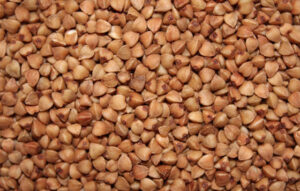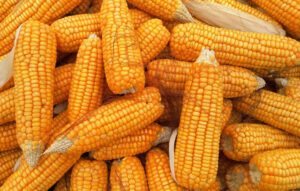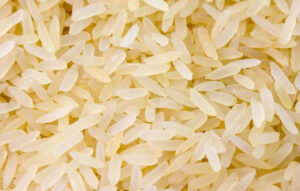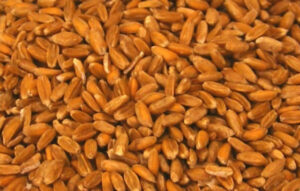GrainProTrade – Triticale wholesale at producer prices
Company GrainProTrade supplies triticale directly from farmers in Ukraine on favorable terms. Our triticale has a glassiness of more than 82%, protein content of 13% and a gluten content of 19%.
You can safely buy triticale from us without worrying about the quality, because all our products are consciously selected by our QM employees in Ukraine and thus meet the highest standards, which guarantees the expected quality of the goods. Besides the high standard, the products are sold at an affordable wholesale price. The conditions for the sale of spelled can be specified at any time in writing or by telephone with the manager. Our team provides our customers with the in Big Bag packed triticale ordered by truck within 5 working days.
Current prices for triticale:
- triticale for FCA-Price from €240/ton plus freight costs.
The main advantages of the ZusaWorking with our company:
- the high level of professionalism of our entire team, which ensures hassle-free delivery of quality triticale in the shortest possible time;
- an appropriate price level, since we work directly with triticale producers in the Ukraine, e.gusamen work;
- convenient delivery straight to you.
Contact our managers on the website or by phone. We offer high quality triticale at an optimal price!

triticale field

Triticale
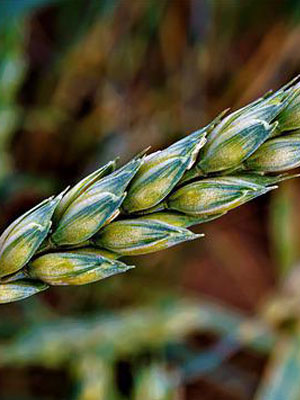
Triticale
All about triticale
Triticale is a new grain crop characterized by high yield potential, increased protein content of essential amino acids (lysine, tryptophan). This determines its nutritional and feeding advantages. The protein content is 1-1,5% higher than that of wheat and 3-4% higher than that of rye. The gluten content is 3-4% higher than that of wheat, but the quality is lower.
Triticale contains: water - 14,0%, proteins - 12,8%, carbohydrates - 68,6%, fats - 1,5%, fiber - 3,1% and ash - 2,0%. The triticale endosperm contains: water soluble proteins 26-28%, salt soluble proteins 7-8%, alcohol soluble proteins 25-26% and acetic acid soluble proteins 18-20%.
In terms of lysine content, triticale is far superior to wheat, in whose grain there is about 3% of the total amount of protein. According to the analyses, several improved triticale lines contained lysine at levels similar to high-lysine corn. Triticale has been shown to be superior to wheat in its nutritional qualities and to rye in baking qualities.
Triticale is also characterized by increased ash, a lower content of carbohydrate components and the presence of a specific rye carbohydrate - trifructosan. Triticale grain proteins contain on average 5-10% albumins, 6-7% globulins, 30-37% prolamins and 15-20% glutin. All types of triticale have more water-soluble nitrogen than parent forms. Compared to wheat, triticale contains more free essential amino acids such as lysine, valine, leucine and others, which makes the biological value of triticale is higher than that of wheat. The main component of triticale grain, like other grains, is starch. It makes up 3/4 of the grain weight.
The content of gluten-forming proteins makes triticale much larger than rye and approaching wheat, suggesting the ability of the amphidiploid grain to form a bound gluten in the wheat type.
The amount of gluten in the triticale grain approximates the content of wheat. Regarding the quality of gluten, in most cases triticale has lower data due to the content of rye proteins.
The root system in winter triticale is urinary, consists of individual roots and a large number of root hairs, which are removed by bundles (lobes) from subterranean nodes. When the grain germinates, embryonic (primary) roots form first. These roots do not die, but in dry years they only provide the plants with water and food. Nodular (secondary) roots form from the underground stem nodes, which make up the bulk of the root system of crops and play an important role in plant life. As plants grow and develop, the root system elongates and penetrates to a depth of 100-120cm or more, branching out and penetrating the soil in all directions. However, the bulk of the roots (75-90%) is in the arable layer of the soil at a depth of 20-25 cm, where aerobic processes are more active. With the help of the plant's roots, water and nutrients are absorbed from the soil and supplied to other organs of the plant.
The stem is a cylindrical straw, hollow, consists of 5-7 internodes, separated by nodes (partitions). The growth of the stalk occurs as a result of the elongation of all the internodes. First the lower internodes are involved in growth, then the subsequent ones, which overtake the lower internodes in growth. This growth is called intercalar or insert. The stem can be bushy and forms from the lower underground nodes, secondary roots and lateral stem shoots.
The ear consists of a limb trunk and spikes. The wide side of the bar is called the front, the narrow side is called the side. Winter triticale has one spikelet on each part of the spikelet stem, usually two or more colors.
The flower consists of two flower scales: lower or outer and upper (inner). Between the scales of flowers there are generative organs: females - pistils with an ovary and a two-lobed stigma, and males - stamens (in winter triticale - three) with a two-lobed anthers. At the base of each flower between the flower scales and the ovary are two delicate Lodik films, when they swell the flower opens.
The fruit is a single seed grain called a grain. The grain consists of an embryo, an endosperm and fused seed and fruit coats. The scales fit closely to the grain without fusing with it. At the base of the grain with the convex (back) side is the embryo, in the upper part there is a baptismal font. The embryo is covered on the inside with a shield that connects it to the endosperm. The embryo consists of a bud covered with rudimentary leaves, a primary stem and a root, that is, the germs of the future plant are formed. The share of the embryo in winter triticale is 2,2-2,5% of the grain weight.
The rest of the grain is represented by endosperm - replacement nutrients. A layer of endosperm that lies beneath the sheath and is made up of rows of cells. Its cells do not contain starch, but are very rich in proteins and enzymes that promote the germination of grain. Below the aleurone layer is the main part of the endosperm, which consists of cells containing starch granules. The gaps in between are filled with proteins. The skins of the fruit and seeds protect the grain from external conditions and from various pathogens of fungal diseases and constitute 5-7% of the weight of the grain.
In the steppe it is recommended to grow triticale after a black or busy steam, alfalfa on a slope, peas, corn on a silo; in the forest-steppe after a busy steam, perennial herbs, peas, corn on silo and green fodder, in the forest-steppe after a busy steam, lupins on green fodder, clover, new potatoes, peas, flax.
Triticale is quite a demanding crop for fertilization. By absorbing batteries, the food occupies an intermediate position between wheat and rye. Fertilizer doses are determined by the fertility and moisture of the soil and the planned yield. Both organic and mineral fertilizers are effective, but fertilizing is mainly done with mineral fertilizers. On fertile soils and after the best predecessors, it is recommended to use 60 kilograms/hectare of nitrogen, phosphorus and potassium.
After the worse predecessors and on less fertile soils, 90 kg/hectare nitrogen, phosphorus and potassium are introduced. Phosphorus-potassium fertilizers are contributed to the main treatment and nitrogen fertilizers are fed at 30 kg/hectare nitrogen in phases II-III and IV of organogenesis. On low-fertility soils, part of the nitrogen fertilizers (up to 30 kg/hectare) is contributed to the main treatment. During sowing, 50 kilograms/hectare of granulated superphosphate is introduced into the strings.
Seeds with at least 92% germination and 98% purity are used for sowing. The seeds are etched with one of the dressings recommended for winter wheat.
Triticale is usually sown in the usual small-scale manner in the steppe after the steam predecessors 4-4,5 million germinating seeds per hectare, after the unpaired predecessors 4,5-5,5 million; in forest-steppe and forest areas – 5-5 million/hectare. Seeds are reduced by 6-4 centimeters on light and dried soil at a depth of 6-1 centimeters. It is recommended to sow in the middle of the optimal sowing time of winter wheat.
When caring for the plants, an integrated system of crop protection against pests, diseases, weeds and debris is used, which provides for the use of the same preparations as for winter wheat.
Collect triticale separately or by direct combination. Separate collection begins at the end of the grain's wax maturity. Direct mowing is carried out in a phase of full maturity, without rearranging the plants due to the risk of breaking the ears.
Most of the spring and winter triticale is used in the manufacture of all kinds of animal feed. This grain serves as an excellent feed for cattle, poultry, pigs, sheep and goats. In addition to cattle breeding, rye-wheat triticale is also used in the baking industry, in the confectionery industry and in fermentation. Grains also become liquid Biofuels are produced, since a sufficiently high quality ethyl alcohol is obtained from this type of grain.
Also, an important aspect is that any pastry based on this grain is stored much longer without losing its flavor and not getting too old. It is quite problematic to buy triticale in stores or flour from this grain, but culture-based baking is very often on sale.
Forage grains are sown to obtain green forage, silage and hay. Given that triticale is an excellent source of protein with a balanced amino acid zusaSince the composition is high and many grain crops are superior in terms of digestible protein content, increasing their production can provide animal husbandry with high-quality grain feed. Straw after growing the crop is also used for fodder, as a subsoil for animals and for the production of organic fertilizers.


